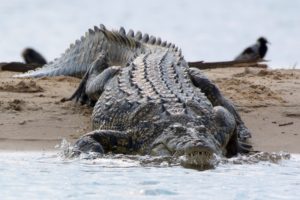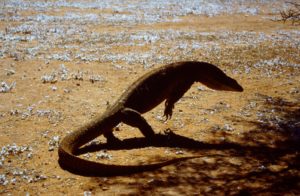Reptiles
Snake senses
It’s hard to imagine how snakes perceive the world as they slither on the ground, underground, or move through the trees and shrubs. Snakes have extraordinary senses, including perceiving the world in ways that humans cannot. Some of the senses…
Are snakes dangerous?
Snakes are mysterious creatures – secretive and elusive and, of course without legs, yet they can slither quickly, disappear down holes, swim effectively and climb trees. Many snakes are venomous and some highly so. Fear of snakes There are many…
First Aid for Snakebite
Back in the nineteenth and twentieth century people tried various remedies to treat snakebite. This included cutting and sucking at the site of the bite, rubbing in Condy’s Crystals but the all-time favourite was a tight arterial tourniquet high up…
Traditional Remedies for Snakebite
A recent social media post claimed that, following a snakebite, chewing the bark of a cashew nut tree would neutralize the venom of the snake and ensure the full recovery of the victim. In many tropical African countries, cashew nut…
Small black snakes of Southern Africa
The small black snakes, which are found across Africa, are tricky to learn to identify. The danger lies in the fact that most species are harmless or mildly venomous, but can be easily confused with the venomous stiletto snakes. Many…
Red-tailed pipe snake
The ‘Red-tailed pipe snake’ (Cylindrophis ruffus) was recently renamed ‘Jodi’s pipe snake’ (Cylindrophis jodiae), which we are talking about here. It is called a ‘Pipe snake’ because it has a round, pipe-like body. The lower end of the body can…
Vine snakes of Africa
Vine Snakes (previously called Twig or Bird Snakes) are widespread across Africa and are usually found in warm savannas and forested areas. There are currently four species and one subspecies of Vine Snake in Africa. The status and distinguishing features…
Giant snakes
Seeing movies like Anaconda let many people believe that there are monster snakes in jungles, some even exceeding 10 m in length. However, those stories have been doing the rounds for many years. So much so that the New York…
Holiday time and snakes
As the holiday season starts, many people will be returning to their family homes or are off on vacation. Snake season is in full swing with decent temperatures and sporadic rain. We are currently seeing a number of snake bites…
Mambas of Africa
“Muhle wena kona hamba,skati wena bona mamba,noko wena hayi tshetsha,wena ifa lapa stretsha.” African proverb “It’s advisable to hamba (walker),when you stumble on a mamba,for if you do not tshetsha (move),you’ll expire on a stretcher.” Mambas have a bad reputation…
Snake Teeth and Fangs
Most snakes have quite long, thin, sharp, and recurved teeth for catching and eating prey. These teeth are firmly anchored to the anterior bone on the lower jaw and the upper jawbone. Just like sharks and crocodiles, snakes replace their…
About snake home ranges and territories
We are often asked whether snakes have a specific territory. The word territory is perhaps not the correct term as it infers that snakes would protect this area to keep other snakes out of it. Snakes do not live in…
Snake Season in Southern Africa
Spring (Sept/Oct in the Southern Hemisphere) is snake season and as the temperature rises, snakes leave their underground shelters in search of food. It is a slow process and they become more active as the temperature increases. Once the first…
The Green Mamba
The Green Mamba (Dendroaspis angusticeps) was described by Sir Andrew Smith in 1849 from animals collected from Natal. Taxonomy The Latin name angusticeps comes from “angustus” meaning narrow and “ceps” an abbreviation for head – narrow head. Surprisingly, many years…
Preventing Snakebite in Southern Africa
Snakebite was recently recognized as a neglected tropical disease by the World Health Organization with about 20,000 snakebite fatalities reported every year in Africa. Subsequent morbidity affects far more people than that. In South Africa we have around 4 000…
Field dressing and cooking a puff adder
Puff adders (Bitis arietans) are widely distributed throughout Sub-Saharan Africa, except in dense rainforest areas and Madagascar. They have a tell-tale flat head with a straight line between the eyes, a thick body with chevron markings, and a stumpy tail,…
Danger posed by Nile crocodiles
In the following, Nile crocodiles (Crocodylus niloticus) are called just crocodiles or ‘crocs’. They occur in Southern- and Eastern African regions and along the Atlantic coastline in Central Africa. They eat any animal they can get a hold of and…
Spotting a magnificent sand monitor (Goanna)
Description of Goannas The Australian sand monitor (Varanus gouldii) is also called Gould’s monitor or colloquially ‘Goanna’. There are two subspecies: Varanus gouldii gouldii and Varanus gouldii flavirufus (smaller subspecies). V. gouldii gouldii is distributed nearly all over Australia except…
Eating a sand monitor lizard (Goanna)
In the former article, I described seeing a majestic sand monitor lizard close by on my drive from Menzies to Sandstone on a side road. Driving further on, I was surprised to see many more Goannas left and right on…



















